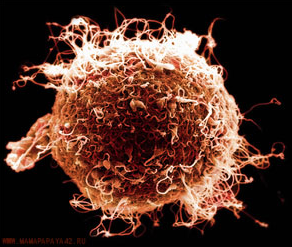
Conception is a pollination rather than a fertilization. For this reason, conception is far more than an egg meeting sperm. Conception is another field, like the Family Field, which is set up long before conception in the quality of the parents’ relationship, their health, their Family Fields, and how they feel about welcoming their conceptus (a newly conceived child). Consider the conception field to be the context into which a child enters.
A common but mistaken belief is that all children choose their parents. I’ve met many people who remember feeling reluctant about being born, they felt pushed, or needed encouragement to come here. This is not to say there are mistakes in who finds who, or how parents and their children are paired; it’s just a reminder that it’s important to avoid rules where mystery is also involved.
Egg Consciousness
An egg is one large cell, full of fluid called cytoplasm. She does not move on her own but is guided by the influences around her. She is open to the unknown, receptive, mutable, and self-supportive. Dr. van der Wal says the egg “lets herself be moved backwards in trust of the future, which phenomenologically could be understood as “moving backward” in opposition to how sperms move actively forward”[i]. Imagine what it feels like to do that!
Eggs are very old in humans. They were produced during the fetal life of the woman. Once a woman is old enough to ovulate, her eggs ripen in clusters. They are thought of as sisters. Although only one or two eggs actually release at ovulation, several mature to the point where any of them could become released eggs. Because only one or two are chosen per cycle, the egg(s) released are privileged; but with that privilege could come a sense of survivor’s guilt for the others that did not make it. Even the chosen one, if left on her own for too long, will have a short life. To live longer, she must meet her opposite in the form of a sperm and fuse with one to become a zygote, which is more than a fertilized cell, it is a unicellular organism.
Sperm Consciousness
Compared to an egg, sperm are very young and vital. They were recently produced and live for a few weeks at the most in the epididymis, where if not released, they will be recycled. Sperm are also vying for union with their opposite — an egg. Although the number in one ejaculate can be in the millions, they can be replenished almost immediately. Unlike the egg, sperm are complete, structured and fully realized in their shape. The egg is internally dynamic and more or less chaotic and formless. Sperm architecture, size, and function will never change. You could say that a sperm is already adult in its form and must die to the egg in order to live on in another form. Sperm offer direction, will, and fire to the transformations required if an egg is to grow into a newly forming human. The energy of the sperm also manifests in the headlong burrowing strength an early embryo needs to embed itself in the mother’s endometrium a week after conception.
Union
Another common belief is that a sperm “penetrates” the egg’s wall, but according to Jaap van der Wal, “no one in science has ever actually seen this.”[ii] Rather, he says, hundreds of sperm arrive to cluster outside the egg’s protective lining, the corona radiata, and together they begin to spin for hours. Dr. van der Wal calls this enchanting and science-defying phenomenon the Preconception Attraction Complex (PCAC). Imagine that instead of penetration we see a communion, some sort of mystical dance! How accustomed we are to our historical biases, which assume a forceful masculine takeover of the passive feminine? PCAC shows us that forceful and unilateral penetration is not Nature’s way. Instead, our assumptions and biases reflect the real and violent histories we all descend from, human-made rather than natural.
The sperms and egg are courting each other, and it’s possible that by spinning they are even causing a transmutation, where each loses their former self to create a new relationship. On film, the PCAC is a gorgeous, majestic image. If we weren’t trained to see cells as strictly biological entities, it would appear that this turning cluster is rendering itself visible through a beautiful display, courting the Unseen and the Great Mystery itself, as if to say, “See this place of beauty! We are here, making way for one of yours!”
Stephen Buhner’s poem Semen speaks to the union:
Semen is Latin,
from a dormant, fertilized,
plant ovum—
a seed.
Men’s ejaculate
is chemically more akin
to plant pollen.
See
it is really
more accurate
to call it
mammal pollen.
To call it
semen
is to thrust
an insanity
deep inside our culture
that men plow women
and plant their seed
when, in fact,
what they are doing
is pollinating
flowers.
Now.
Doesn’t that change everything between us? from The Secret Teachings of Plants
Only when she is ready (and who knows what really cues her?) the egg opens her walls. First her zona pellucida is dissolved, and then a sperm enters her watery inner world. As mentioned, there is no forceful takeover or penetration by the sperm. He lingers with her, they engage in a mysterious dance, and according to a natural timing, she yields to him or them (in the case of two or more). The sperm has joined the egg inside her body. The new being they’ve made way for has not yet happened. She is still an egg cell even though he is in there, a so-called pre-zygote. And then a few hours later, when the nuclei also fuse, a zygote, a new embryo, is forming. After the fusion, an internal cell multiplication happens (mitosis) and then a unicellular body sub-organizes into more and more cells. This will go on for another five to six days.
~excerpted from my soon to be released book: “It’s Never Too Late: Healing Prebirth and Birth At Any Age
[i] Wal, J, van der, 2007. “Human Conception: How to Overcome Reproduction?” in Biodynamic Craniosacral Therapy, vol. 1. North Atlantic Books, CA., USA. pp. 137–54.
[ii] Wal, J, van der. “The Embryo in Us” — A Phenomenological Search for Soul and Consciousness in the Prenatal Body,” Journal of Prenatal and Perinatal Psychology and Health 27, no. 3 (April 2013).

